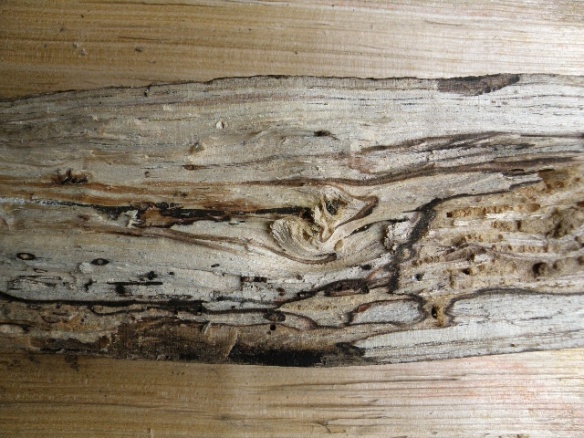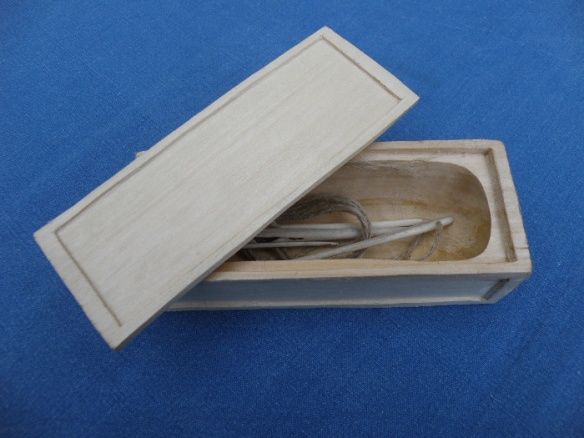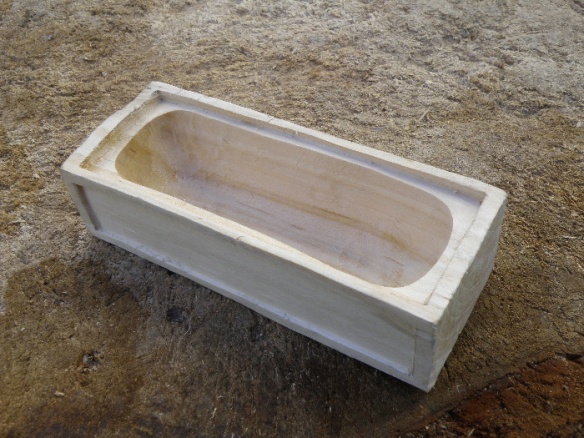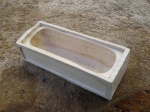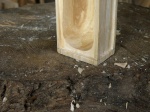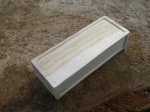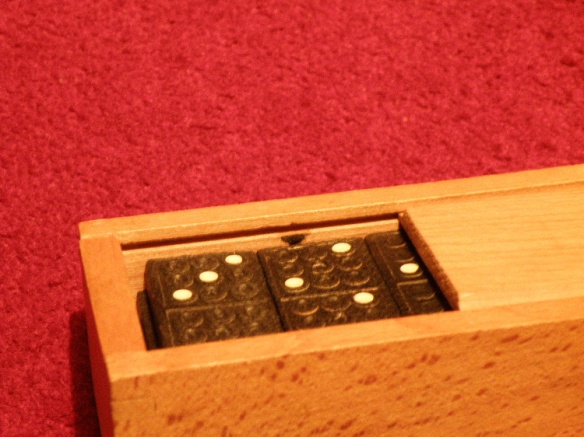This is the first post of a group of posts about the prize objects that I made earlier this year for a lucky Young Archaeologists’ Club Branch.

I needed to make things which could be easily posted – small, and/or lightweight. Having some Birch bark, stripped from some Silver Birch logs that I had been given by a friendly tree-surgeon doing a job in a nearby town-centre, it seemed a good idea to make a container. Here it is:
This slideshow requires JavaScript.
The bark wasn’t the best for the job. It was old, thin, cracked, lumpy, papery. It had to be soaked to make, and keep, it pliable. There is a little repair to stitch up a crack. Silver Birch trees do not grow well where I live. The trees being cut by the tree surgeon were ornamental plantings that hadn’t been very successful. But I was lucky to have been passing as he was at work, and to gather up the logs into the back of my car with his blessing. Otherwise, I couldn’t have got the bark at all.
I made the container using modern tools – specifically, a metal cutting blade and needle – so really it is a type of facsimile. Here is my definition of replica and facsimile. The container is based on a range of European finds from Neolithic sites. This means that it is not a direct copy of a single archaeological artefact.
The shape and general method of construction were taken from the containers found with Ötzi in the Ötztal Alps on the Austria-Switzerland border. Otzi seems to have had two containers, one of which survived fairly well. This was about 20cm tall. Its oval base measured about 18cm at its widest point. There was no evidence for a lid.
Only a tiny amount of the stitching survived in one of Ötzi’s containers. Details of the side stitching and base stitching methods in my facsimile were taken from finds at Sutz-Lattrigen-Rütte and Twan-Bahnhof, two Swiss lakeside settlement sites.
The containers that I used for reference had been stitched with un-braided bast strips, so I used lengths of hemp (gathered as part of a raw materials swap for sinew and raw-hide, thanks Sally!) without twisting them into cord. However, I did braid up the lengths of hemp to go around the outside of the base, purely out of convenience and hopefully to give it a longer life. If something goes wrong, it will be harder for the new owners to fix than for me, if like Ötzi I was carrying the container as part of my own kit.
The hemp smells wonderful, sort of smokey and sweet and sharp all at the same time.
This “composite” approach, using information from different sources, was necessary because the evidence comes from fragile, partial, archaeological artefacts. Artefacts made of organic materials are rare in Europe unless from waterlogged or frozen contexts; and although birch bark technology is still used in North America, I would only use techniques and materials from that analogy if I thought they were appropriate to the task in hand and to the archaeological evidence.
And then a friend contacted me, asking if I knew of someone who could make him a particular type of stone object for a Neolithic handling collection he was compiling. Along with some suggestions, I offered him a (one-third size) version of the container:
This slideshow requires JavaScript.
